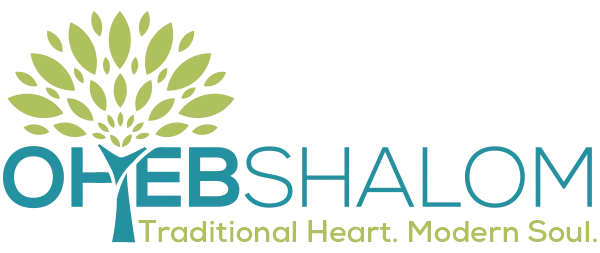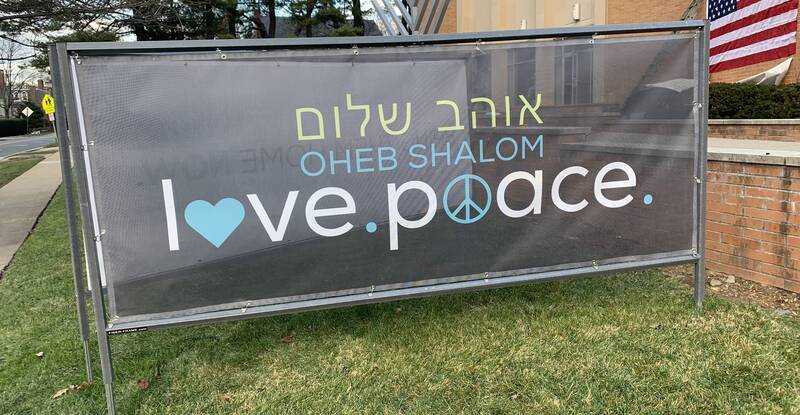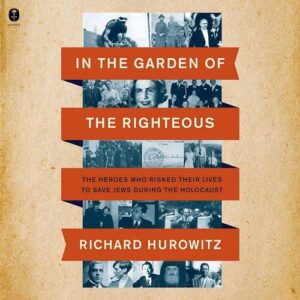“Rabbi, the message is not getting through.” Sitting with one of the more deeply involved Oheb Shalom members, I was surprised and not surprised. With so much information (and misinformation) overload, it’s hard for most messages to get through.
What message was he talking about? The message I’ve been hoping to share loud and wide and clearly, which is that in the turmoil of what it feels like and means to be part of the Jewish community since October 7, there is no one-size-fits-all approach. That Oheb Shalom is a pluralistic, diverse community which holds Zionism as a core value and also wrestles with how to hold that value, what it looks like and means. This was true during peacetime, and it is all the more true during war.
We seem, though, to have gotten stuck. We seem to be caught in a binary sense of our commitments. Not just at Oheb, but in the broader community and world. But the truth is: most of the congregation just doesn’t relate to that.
In speaking with so many of you these past 72 days, the message is this: we are diverse. Some people feel totally sure of their convictions. Others are unsure, disoriented, wrestling with conflicting ideas and feelings. Many are mourning loved ones in Israel, or are worrying about loved ones serving in the IDF. Many are also unsure what to do with the images and reports from Gaza. These categorizations are not mutually exclusive. It needs to be said: Most people who support Israel also care about Palestinian civilians. It is not binary. It is complex and nuanced. And so are we.
Layered on top of all of that is the sense of total disorientation by many whose core identity as Jews is bound up with the fight for social justice. Suddenly, caring about Israel has cast us as outcasts in the progressive circles many proudly worked to build. Add to the mix as well that many of us have never lived through a time when anti-Semitism was front-page news for weeks on end, and we are reeling and anxious, unsure how to hold it all with any coherence.
Even as I write this, I know: there will be some who will read this and think: wait, she got it all wrong, that doesn’t capture me at all. Yes, I suppose that is my point. We can’t all be characterized in any one way. It’s much too complex for that. We are much too complex for that.
I’m writing this now because after much deliberation, we will be mounting new banners outside of the Oheb Shalom building. Some congregants advocated loudly for signs that read We Stand with Israel. Others advocated loudly that such signs would not capture the nuance of what they are feeling right now; that standing with Israel’s right to exist is perhaps different than standing behind every aspect of the Israeli government’s actions. What slogan could possibly capture that? Some argued for no signs at all; some took umbrage at the lack of a sign. Some congregants are committed more than anything to peace-making; others felt that signs calling for peace were premature until the hostages come home. I fantasized that we might find a way for every one of us to write our own sign and hang that up outside – to show the world our nuance, our pluralism, that there is no one way to feel or think right now at Oheb Shalom or in the broader Jewish world. To help everyone in the congregation have a voice. It turned out to be impractical. Too bad.
In the end, we settled on the following: an Israeli flag and an American flag. Also, two signs. One that reads: Bring Them Home Now. And one that offers up nothing more or less than our name: Oheb Shalom. Love. Peace.* **
I love that we have four signs. I love that we don’t pretend that we can – collectively or individually – be reduced down to just one slogan or idea. The war in Israel and Gaza is so much more complex than that. Who we are as a Jewish community is so much more nuanced and diverse. Who we are at Oheb is, too.
Rabbi Yosi bar Hanina taught: God’s word comes to each person according to their uniqueness. Don’t be surprised about this! When the manna fell, it tasted differently to everyone. (Pesikta d’Rav Kahana 12:25; 5th-6th century AD, Israel)
The flags and the signs will mean something different to each of us, and to each person who drives or walks by. Collectively, I hope they tell the story of a congregation holding on to our ideals as Americans and as a Jewish community. We hang the flags not because our countries are perfect, but as a sign of loyal commitment to bringing them closer to the ideals on which they were founded. We post flags and banners because we want to contribute to the broader community conversation, and help us all get unstuck from feeling we have to be defined as being just “one thing.”
The manna tasted differently to everyone because we are each unique, and to each and every one of you wondering “wait, is Oheb the place for me? I think they’re too [fill in the blank]…” The message I’m trying convey is this: you belong here. Whatever you hold in your heart and head about this war, about the intersection of what’s happening with Israel and anti-Semitism, about Jews and political ideology… if you are someone who believes in diversity, in pluralism, in nuance; in coming together with people who think and feel differently than you do; in coming together with open-hearted, kind people, who wrestle with ideas but also walk gently through the world so everyone involved feels less alone, and want to do all of that through the lens of Torah and Jewish culture: you belong here.
My door is open to all who wish to be in conversation about this (or anything else). In January we will be sharing a lineup of programming around Israel; ideas are welcome and can be directed to our program chairs, Doug Magid and Leo Gordon. We will hold another Listening Circle, which – for those who weren’t able to join the last one – is a heart-centered way of gathering and talking across difference. And we will continue to gather, pray, share meals and sacred space, having nothing to do with politics or Israel or any of this, but just because that’s we do as a Jewish community, week in and week out.
Am Yisrael Chai – may the Jewish people live on in and through each and all of us.


 We Jews have so many holidays and days of remembrance. From Nissan 1, the first day of Passover, marking the beginning of the year (Yes, Nissan actually is the first month of the Hebrew calendar) through Purim in the month of Adar, there are scores of holidays — and four new years. Then there is the weekly Shabbat celebration. I’d estimate that at least 100 days are marked in some special way.
We Jews have so many holidays and days of remembrance. From Nissan 1, the first day of Passover, marking the beginning of the year (Yes, Nissan actually is the first month of the Hebrew calendar) through Purim in the month of Adar, there are scores of holidays — and four new years. Then there is the weekly Shabbat celebration. I’d estimate that at least 100 days are marked in some special way.